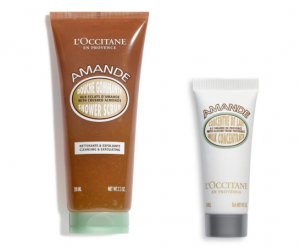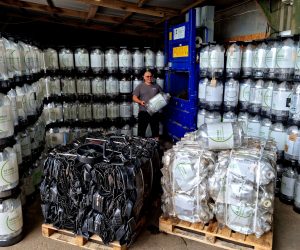

What does increasing demand for sustainable packaging tell us about today’s consumer?
Simon Buswell, Director at Eco Flexibles
From food, grocery and everyday consumer goods through to fashion and high-end automotive markets, every single industry in today’s business landscape is guided in varying degrees by the need for sustainability. Whether that’s supply chain efficiency, CO2 reductions, material innovations, or social and economic programmes, there is an enormous drive towards ‘green’ business that minimises impact on the planet’s resources.
With a global consumer base more actively switched-on to matters of the environment, sustainability is intrinsically connected to retail and commercial performance. The World Wildlife Fund (WWF) for example, notes that global online searches for sustainable goods have increased by an enormous 71% from 2016 in what the organisation terms ‘the great eco-wakening’. The WWF notes that while the bulk of the growth is in Western markets, there is also significant development in transition economies such as China and India. In short, ‘green’ has gone global.
Of course, brands owners are finding huge opportunity on the table when it comes to boosting sustainability and meeting the rising consumer demand for ‘green’ product options. For example, the Boston Consulting Group found in a recent global consumer survey that almost three-quarters of shoppers were actively willing to spend more money for packaging that is demonstrably sustainable. On crowded store shelves, brands are looking for every competitive edge available to win market share and solidify the bottom line – which means there’s true commercial value to thinking ‘green’ when it comes to packaging and product design.
However, as sustainability continues to become the benchmark and not the exception, it seems to be moving in many different directions when it comes to using this market acceleration to predict the future of consumer behaviour. So, besides shaping today’s packaging and product development, what does the evolving sustainability narrative actually tell us about today’s consumers?
Consumers are not afraid to get technical
A crucial element for brands to understand is that the consumer is getting more hands-on with sustainability, particularly when it comes to plastics and packaging. They want to know the origin and provenance of packaging, spurred on by more widespread communication of recycled content – now becoming a common part of on-pack copy.
Historically, substrate terms such as HDPE, PCR, PET and PP were kept in the background when it comes to consumer communications. Today’s savvier consumer, however, is becoming more comfortable with the technicalities of plastics. As a result, there is increasing understanding that the plastic itself is not the core environmental issue – the problem largely resides with consumer use and waste infrastructure, so it’s not as simple as it appears on the surface. Additionally, increasing media coverage such as Netflix’s hit documentary Seaspiracy have put plastics under the microscope to report that packaging is often scapegoated when it comes to waste.
Changing behaviours at scale can be a real challenge, but ‘reduce, reuse, recycle’ remains a core tenet. With clarity and transparency top of the agenda, there is great opportunity for brand owners to go deeper with their consumer-facing sustainability claims. At Eco Flexibles, one of the major forces that drives our flexible packaging business is the change from mixed plastics to mono polymers, which are easier to recycle without compromising on performance. Our team supports brands of every size in switching existing packaging lines to lightweight alternatives that meet the rising demand for greener, high-performance packaging that is fully recyclable.
The end of greenwashing
‘Sustainability’ itself isn’t a wholly new concept – and in fact today’s interpretation is vaguer and more nebulous. What an individual considers to be environmentally or socially sustainable can vary wildly, which means brands are not always competing on a level playing field in this regard.
The term ‘greenwashing’ has come to prominence, describing the process of a business or organisation twisting, distorting or exaggerating their environmental impact. For instance, a symptom of greenwashing might be when a business spends more budget on marketing itself as an environmentally conscious business than on reducing its tangible ecological impact. Over time, greenwashing has caused mistrust and confusion among consumers, in turn making sustainability less meaningful overall.
To counter this rising problem, the UK’s Competition & Markets Authority (CMA) is introducing the Green Claims Code. This is new guidance that aims to bring meaning and significance back to sustainability, while also providing new B2B and B2C protections. The Green Claims Code applies six key principles that all sustainability claims must adhere to, covering on-pack, off-pack and digital communications.
Under the new guideline document, which applies to all existing and new communications, sustainability claims must:
- Be truthful and accurate
- Be clear and unambiguous
- Not omit or hide important relevant information
- Make comparisons fair and meaningful
- Consider the full life cycle of the product or service
- Be substantiated
In short, consumers are looking for transparency and authenticity, becoming more sceptical of sustainability claims – which means communication needs to be watertight, accurate and honest.
Clear post-use action is key
One of the challenges for brand owners, particularly in high volume product categories such as food and drink or FMCG, is that the technology behind it is complex and cutting edge but must be turned into an actionable step the consumer can take. While this involves rising technologies such as compostable packaging, for the most part this takes the form of clear recyclability.
Studies conducted by intelligence organisation Capgemini Research Institute found that 72% of consumers actively want to adopt circular practices with their product selections, which puts recyclability front and centre of discussions. For many, it’s all about breaking away from the linear ‘take, make, waste’ model of consumerism and closing the loop.
As recycling infrastructure races to catch up with the innovation on display from today’s brand and packaging manufacturers, including our own pioneering range of bespoke and ‘off the shelf’ packaging, the future consumer is set to focus even more heavily on choosing packaging that’s simple to recycle in contemporary waste streams.
In summary, the realm of ‘sustainability’ is pulling back to become more focused and more meaningful and putting real commercial potential in the crosshairs for brand owners. In addition, the consumer relationship with eco-friendly products is continuing to shift and evolve.
The message for the market is clear – sustainability isn’t a phase or fad for the consumer, it’s the next significant step change in buyer behaviour. How businesses are using this perspective to shape their packaging lines today will prove crucial for success tomorrow.





